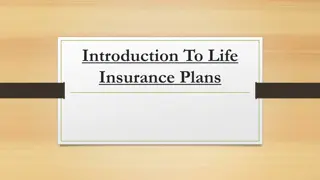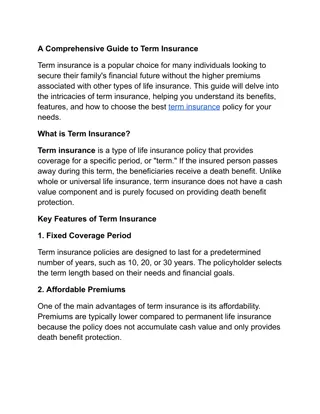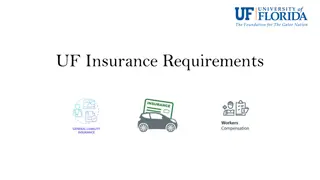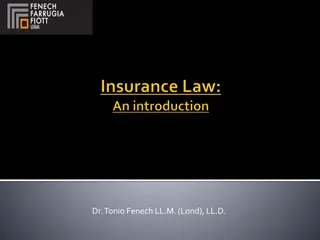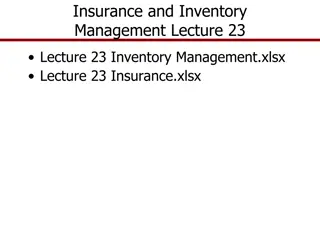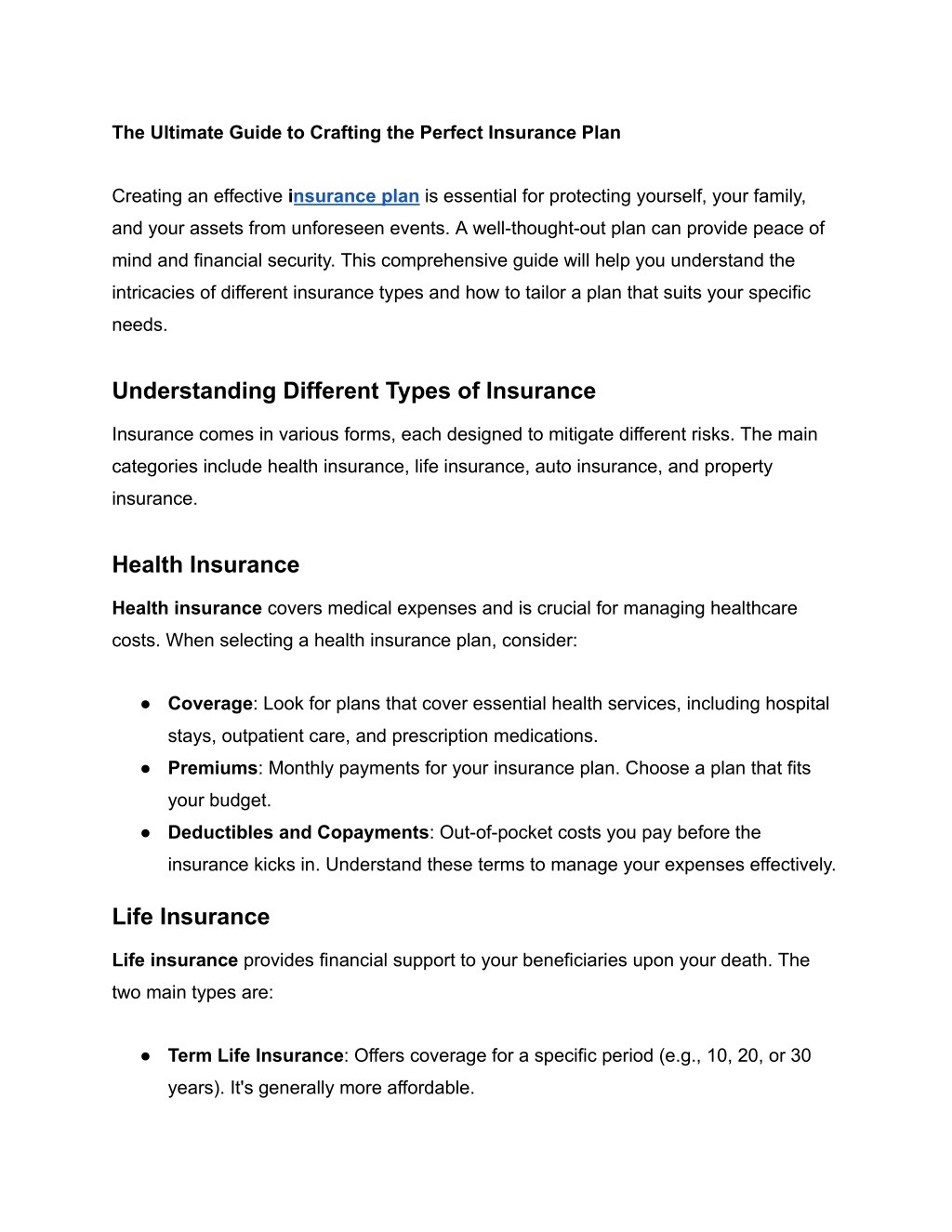
The Ultimate Guide to Crafting the Perfect Insurance Plan
Creating an effective insurance plan is essential for protecting yourself, your family, and your assets from unforeseen events. A well-thought-out plan can provide peace of mind and financial security. This comprehensive guide will help you understan
Uploaded on | 1 Views
Download Presentation

Please find below an Image/Link to download the presentation.
The content on the website is provided AS IS for your information and personal use only. It may not be sold, licensed, or shared on other websites without obtaining consent from the author. Download presentation by click this link. If you encounter any issues during the download, it is possible that the publisher has removed the file from their server.
E N D
Presentation Transcript
The Ultimate Guide to Crafting the Perfect Insurance Plan Creating an effective insurance plan is essential for protecting yourself, your family, and your assets from unforeseen events. A well-thought-out plan can provide peace of mind and financial security. This comprehensive guide will help you understand the intricacies of different insurance types and how to tailor a plan that suits your specific needs. Understanding Different Types of Insurance Insurance comes in various forms, each designed to mitigate different risks. The main categories include health insurance, life insurance, auto insurance, and property insurance. Health Insurance Health insurance covers medical expenses and is crucial for managing healthcare costs. When selecting a health insurance plan, consider: Coverage: Look for plans that cover essential health services, including hospital stays, outpatient care, and prescription medications. Premiums: Monthly payments for your insurance plan. Choose a plan that fits your budget. Deductibles and Copayments: Out-of-pocket costs you pay before the insurance kicks in. Understand these terms to manage your expenses effectively. Life Insurance Life insurance provides financial support to your beneficiaries upon your death. The two main types are: Term Life Insurance: Offers coverage for a specific period (e.g., 10, 20, or 30 years). It's generally more affordable.
Whole Life Insurance: Provides lifelong coverage and includes an investment component that builds cash value over time. Auto Insurance Auto insurance protects against financial loss from accidents or theft. Key components include: Liability Coverage: Covers damages you cause to others. Collision Coverage: Pays for damage to your vehicle from a collision. Comprehensive Coverage: Covers non-collision-related incidents such as theft or natural disasters. Property Insurance Property insurance safeguards your home and belongings. Key types are: Homeowners Insurance: Covers your home structure and personal belongings against risks like fire, theft, and certain natural disasters. Renters Insurance: Protects personal property if you rent your home. Flood Insurance: Necessary for properties in flood-prone areas, as standard homeowners insurance typically does not cover flood damage. Steps to Create the Perfect Insurance Plan Assess Your Needs Evaluate your personal and financial situation. Consider factors such as age, health, dependents, income, and assets. This will help you determine the types and amounts of insurance you need. Research and Compare Options
Investigate different insurance providers and policies. Use online tools to compare coverage options, premiums, deductibles, and benefits. Look for reviews and ratings to gauge the reliability and customer service of insurers. Understand Policy Details Read the policy documents carefully. Pay attention to terms and conditions, exclusions, and the claims process. Knowing what is and isn't covered helps you avoid surprises. Consult with an Insurance Advisor An insurance advisor can provide personalized advice based on your unique needs. They can help you navigate complex insurance jargon and ensure you choose the right policies. Regularly Review and Update Your Plan Life changes, such as marriage, the birth of a child, or buying a home, can affect your insurance needs. Regularly review your policies and update them to reflect your current situation. Maximizing Your Insurance Benefits Look for Discounts Insurance companies often offer discounts for bundling multiple policies, maintaining a good driving record, or installing home security systems. Ask your insurer about available discounts. Maintain a Healthy Lifestyle For health and life insurance, a healthy lifestyle can lower premiums. Participate in wellness programs and avoid risky behaviors like smoking to benefit from lower rates. Implement Preventive Measures
Taking preventive measures can reduce the risk of claims and lower your premiums. For instance, installing smoke detectors and security systems can reduce the likelihood of fire and theft. Know the Claims Process Familiarize yourself with the steps to file a claim. Knowing the required documentation and the process helps ensure a smooth and efficient claim experience. Avoiding Common Mistakes Underinsuring Ensure your insurance coverage is sufficient to cover potential losses. Underinsuring can lead to significant out-of-pocket expenses in case of a claim. Ignoring Policy Exclusions Understand what is excluded from your policy to avoid denied claims. Read the fine print and clarify any doubts with your insurer. Neglecting to Update Your Plan Failing to update your insurance plan can leave you unprotected. Regularly review your policies and make necessary adjustments to align with your current needs. Conclusion Creating a comprehensive insurance plan involves assessing your needs, researching options, understanding policy details, and regularly updating your plan. By maximizing benefits and avoiding common mistakes, you can ensure optimal protection for yourself and your loved ones.



